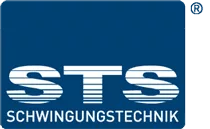Solution of complex vibration problems
Test laboratory and quality assurance
When you need to control vibrations, you want to achieve the best possible result. We believe that we have not done our job properly until your problem with vibrations, shocks and noise is solved.
That is why we rely solely on our own test results. Our method for testing and classifying vibration dampers is patented. Product and performance data provided by third parties are sometime unreliable. We know this from experience and prefer to verify measurements – for every individual product which we supply.
A distinguishing feature and criterion for assessing the possible purpose of vibration dampers is the Shore hardness of the rubber damping element used.
However, the evaluation of vibration dampers according to the Shore hardness of the rubber damping element used leads to several problems: Since rubber is a natural material, the Shore hardness can vary greatly from one rubber damping element to another, which leads to considerable variations in quality and associated problems in the design and subsequent use of such vibration dampers. Furthermore, the Shore hardness of the rubber damping element allows only limited conclusions to be drawn about the spring stiffness of the same and, in particular, about the spring stiffness of the entire vibration damper. For most design cases, however, the spring stiffness is a decisive criterion.
Our patented procedure for testing and classifying vibration dampers allows a more precise classification of vibration dampers with simple means.
The DYNA-MESS machine
STS Schwingungstechnik Schuster GmbH has its own test facilities for static and dynamic analysis. The centrepiece is a DYNA-MESS machine which we use for static and dynamic push and pull tests.
With its large operating range from 1 kN (100 kg) to 100 kN (10 t), the machine covers the entire spectrum of vibration dampers. It is precision-calibrated to class 1 in its entire working range.
The DYNA-MESS machine is very versatile and can also be used for other special purposes, such as to test combinations of dampers, to reproduce specific conditions in special cases, to carry out tensile tests… .
Not only do the insights gained from our own extensive tests form the basis for our approach to giving professional advice and finding solutions but they are also fundamental to the quality of our products and their long-term stability in heavy-duty industrial applications.
We will carry out the following tests for you:
- Static damper compression
- Calculation of the correct installation height of machine feet and anti-vibration mountings
, e.g. under the effective machine weight - Parameters: static stiffness, spring rate
Increase of load until failure of damper (break …)
- Endurance test under constant load
- Calculation of creep properties/subsidence of damper
- Parameters: dynamic stiffness, dynamic spring rate
- Calculation of natural frequency
- Change in damping action due to self-heating
- Dependency of dynamic spring rate on vibration generator frequency
- Dependency of dynamic spring rate on vibration generator amplitude
- Dependency of damping on frequency and amplitude
- Isolation rate
- Calculation of isolation rate at known vibration generator frequency
- Dynamic endurance test at known vibration generator frequency
- Analysis of dynamic long-term behaviour (e.g. dynamic creep)
- Assessment of damage symptoms (fatigue, vulcanisation degradation…)
There are many suppliers of catalogue goods for anti-vibration mountings.
With STS Schwingungstechnik Schuster GmbH you have a specialist with many years of know-how as your partner.
- Many years of practical experience in the field
- Sound knowledge of the theory and elementary principles
- In-house test laboratory for proof-of-principle testing

